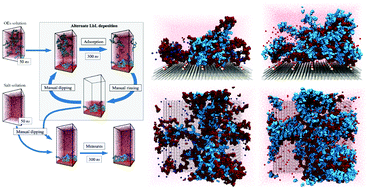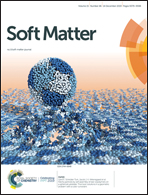Atomistic simulation of PDADMAC/PSS oligoelectrolyte multilayers: overall comparison of tri- and tetra-layer systems
Abstract
By employing large-scale molecular dynamics simulations of atomistically resolved oligoelectrolytes in aqueous solutions, we study in detail the first four layer-by-layer deposition cycles of an oligoelectrolyte multilayer made of poly(diallyl dimethyl ammonium chloride)/poly(styrene sulfonate sodium salt) (PDADMAC/PSS). The multilayers are grown on a silica substrate in 0.1 M NaCl electrolyte solutions and the swollen structures are then subsequently exposed to varying added salt concentration. We investigated the microscopic properties of the films, analyzing in detail the differences between three- and four-layer systems. Our simulations provide insights into the early stages of growth of a multilayer, which are particularly challenging for experimental observations. We found rather strong complexation of the oligoelectrolytes, with fuzzy layering of the film structure. The main charge compensation mechanism is for all cases intrinsic, whereas extrinsic compensation is relatively enhanced for the layer of the last deposition cycle. In addition, we quantified other fundamental observables of these systems, such as the film thickness, water uptake, and overcharge fractions for each deposition layer.



 Please wait while we load your content...
Please wait while we load your content...